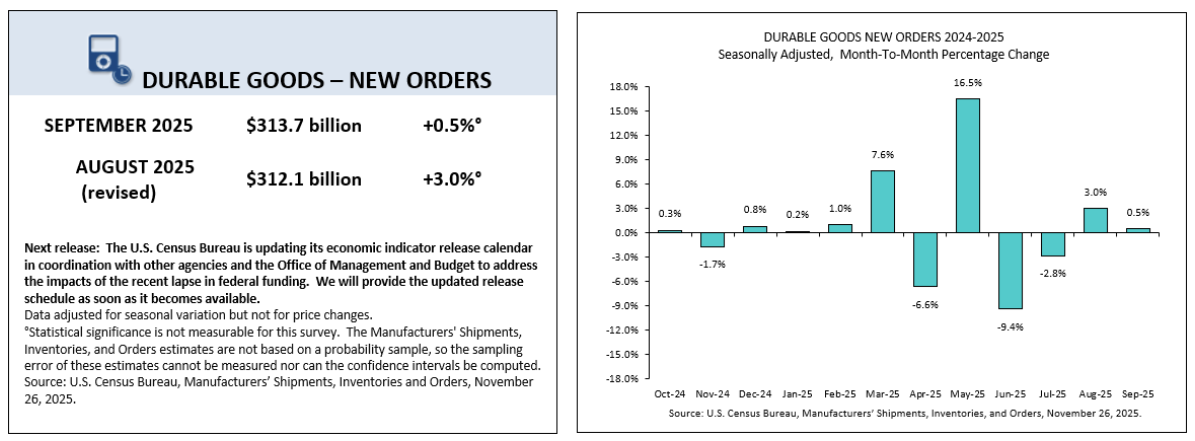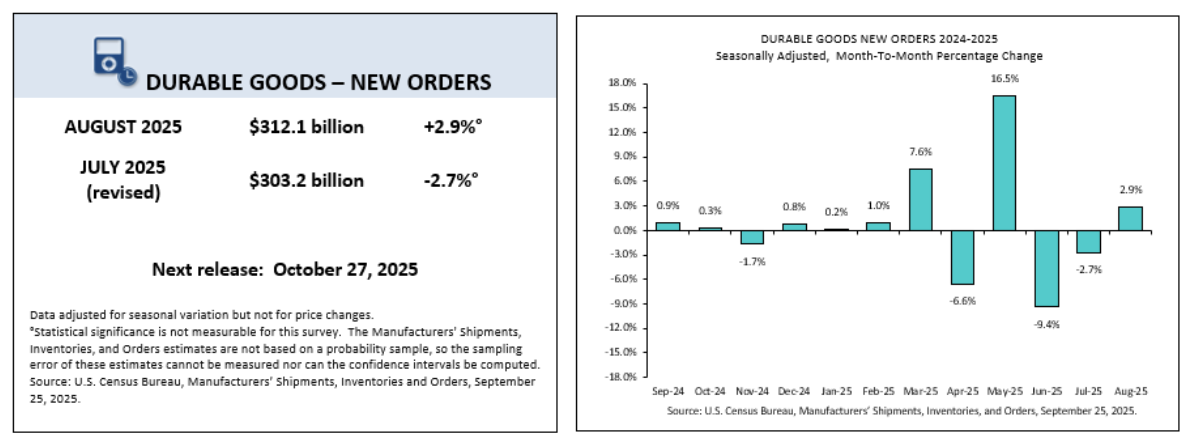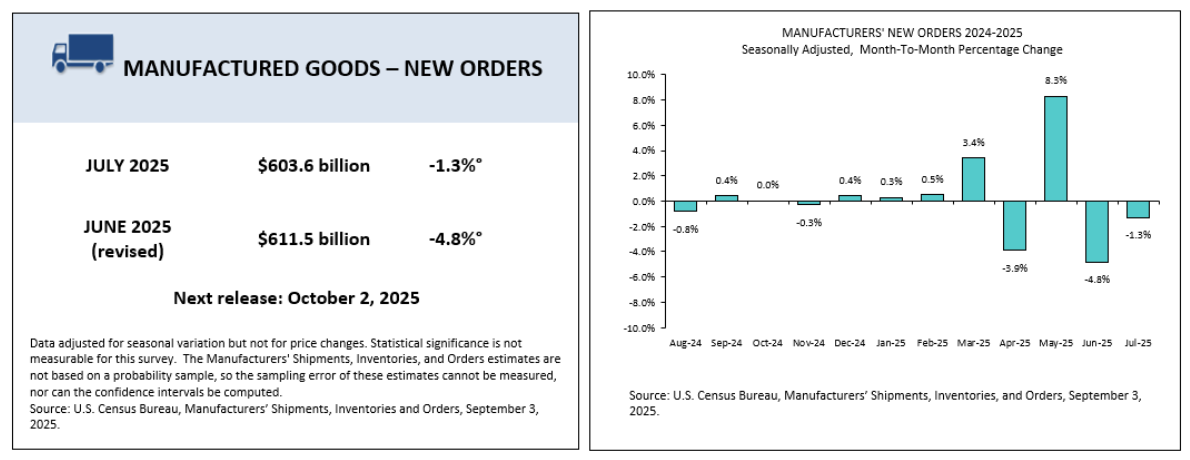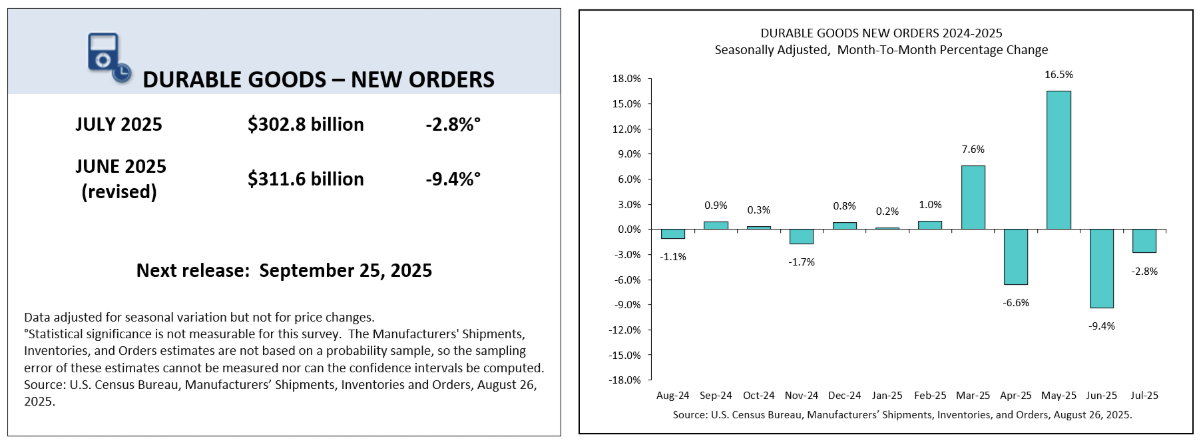 US Manufacturers' Shipments, Inventories, and Orders
US Manufacturers' Shipments, Inventories, and Orders
Data
Industry
- Source
- Census Bureau
- Source Link
- https://www.census.gov/
- Frequency
- Monthly
- Next Release(s)
- December 5th, 2025 10:00 AM
-
December 24th, 2025 8:30 AM
Latest Updates
-

US durable goods new orders increased 0.5% MoM (vs 0.3% MoM expected) in September, adding to the 3.0% MoM increase in August.
- Ex transport orders were up 0.6% MoM (vs 0.2% MoM expected), continuing a string of moderately strong gains in August (+0.5% MoM) and July (+0.9% MoM).
- By segment, growth was strongest in primary metals (+1.4% MoM), electrical equipment (+1.5% MoM), and fabricated metal products (+0.5% MoM).
- Core capital goods shipments and new orders were both up 0.9% MoM, and on an annual basis, are up 1.5% YoY and 2.7% YoY, respectively.
- Core capital goods unfilled orders increased just 0.1% MoM and were up 0.6% YoY.
- Core capital goods inventories jumped 0.4% MoM and were up 2.5% YoY, fueled by machinery (+0.4% MoM) and primary metal (+0.4% MoM) inventory growth.





-1.png)
-1.png)
-1.png)
-1.png)
-1.png)
-1.png)
-1.png)